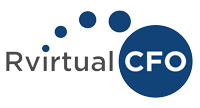As a freelancer, managing your taxes can feel overwhelming. Unlike traditional employees whose taxes are withheld by their employer, freelancers are responsible for calculating, reporting, and paying their own taxes. One of the most important aspects of this responsibility is making quarterly tax payments.
Failing to understand or comply with quarterly tax requirements can result in penalties, interest, and financial stress. In this guide, we’ll break down what quarterly taxes are, who needs to pay them, and how you can stay on top of your obligations with confidence.
What Are Quarterly Tax Payments?
Quarterly tax payments are estimated tax payments that self-employed individuals, freelancers, and business owners must make throughout the year. These payments cover income tax as well as self-employment tax, which includes Social Security and Medicare contributions.
The IRS requires freelancers to make these payments because their income isn’t subject to withholding, unlike the wages of traditional employees. The purpose is to ensure that taxes are paid incrementally as income is earned, rather than in a lump sum at the end of the year.
Who Needs to Pay Quarterly Taxes?
You’re required to make quarterly tax payments if:
- You expect to owe at least $1,000 in taxes after subtracting withholding and refundable credits.
- You earn income that isn’t subject to withholding, such as freelance income, side gigs, or small business revenue.
If you also work a traditional job, you might avoid quarterly payments by adjusting your W-4 with your employer to increase withholding from your regular paycheck.
How to Calculate Quarterly Tax Payments
Accurately estimating your quarterly tax payments is crucial to avoid penalties or overpaying. Here’s how to do it:
1. Estimate Your Annual Income
Start by estimating how much you expect to earn for the entire year from all sources of income. Include freelance work, contract jobs, side gigs, and any other revenue streams.
2. Deduct Business Expenses
Freelancers can deduct legitimate business expenses from their income to reduce their taxable amount. Common deductions include:
- Home office expenses.
- Equipment and software costs.
- Travel and mileage for business purposes.
- Professional development or training costs.
Keep detailed records of your expenses to ensure accuracy and compliance.
3. Calculate Your Taxable Income
Subtract your deductions from your estimated income to determine your taxable income for the year.
4. Apply the Tax Rates
Use the current IRS tax brackets to calculate your income tax. Don’t forget to include self-employment tax, which is 15.3% of your net earnings (12.4% for Social Security and 2.9% for Medicare).
5. Divide by Four
Once you’ve calculated your annual tax obligation, divide it by four to determine your quarterly payments. Adjust your estimates throughout the year if your income fluctuates.
When Are Quarterly Taxes Due?
Quarterly tax payments are due four times a year:
- April 15 (for income earned January–March).
- June 15 (for income earned April–May).
- September 15 (for income earned June–August).
- January 15 of the following year (for income earned September–December).
If the due date falls on a weekend or holiday, the deadline is typically extended to the next business day. Mark these dates on your calendar to avoid missing them.
How to Make Quarterly Tax Payments
The IRS makes it easy to pay your quarterly taxes online, by mail, or through third-party providers. Here are the most common methods:
- Online Payments: Use the IRS Direct Pay system or the Electronic Federal Tax Payment System (EFTPS) to make secure payments online.
- By Mail: Send a check or money order with Form 1040-ES to the appropriate IRS address for your state.
- Third-Party Providers: Some payment processors accept credit or debit card payments for a small fee.
Keep confirmation of your payments for your records.
Tips for Staying Organized
Staying organized is key to managing your quarterly tax obligations effectively. Here are a few tips to help:
- Track Your Income and Expenses: Use accounting software or apps to record your earnings and expenses in real time.
- Set Aside Tax Funds: Save a percentage of each payment you receive into a separate account specifically for taxes.
- Review Regularly: Revisit your calculations periodically to ensure your estimates are accurate.
- Work with a Professional: A tax professional or accountant can help you manage your taxes, maximize deductions, and avoid costly mistakes.
Avoiding Penalties
Failure to make quarterly tax payments or underpaying your estimated taxes can result in IRS penalties and interest. To avoid this, ensure that:
- You pay at least 90% of your current year’s tax liability or 100% of your previous year’s liability (110% if your income is higher).
- Your estimates are as accurate as possible, adjusting them if your income changes significantly during the year.
Quarterly Taxes Made Simple
Quarterly tax payments are an unavoidable part of freelancing, but they don’t have to be a source of stress. By understanding how to calculate your taxes, staying organized, and making timely payments, you can meet your obligations with confidence and avoid unpleasant surprises.
Being proactive about your taxes ensures you stay compliant with IRS rules and keeps your finances on track, allowing you to focus on what you do best—growing your freelance business.

